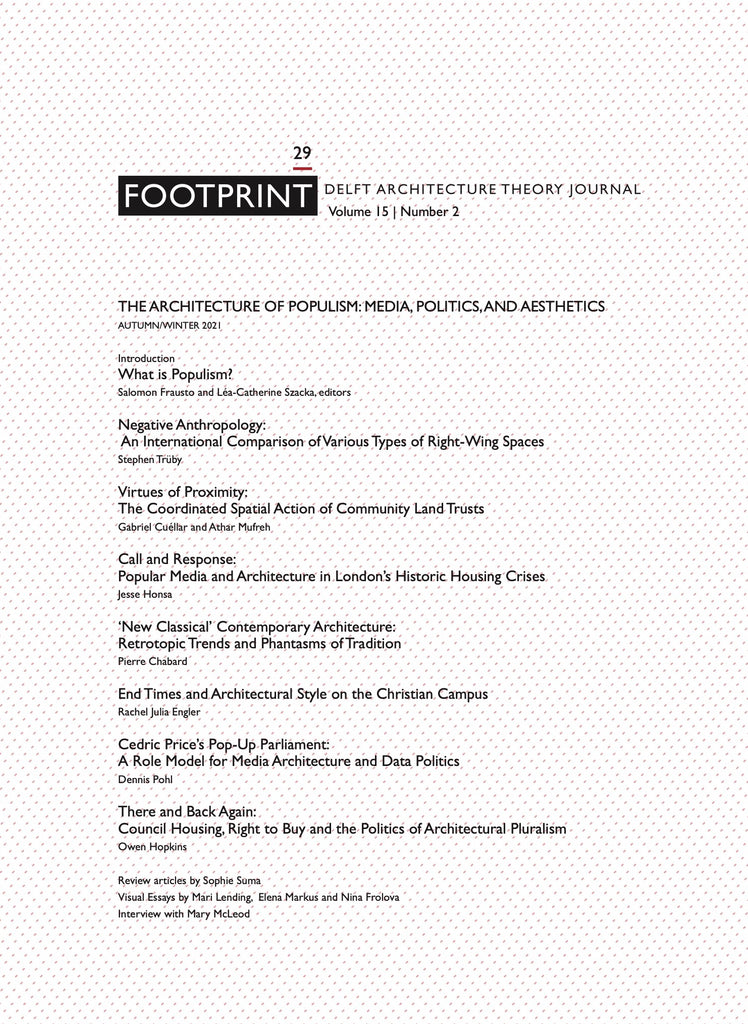Your cart is currently empty!
Footprint 29 The Architecture of Populism
+++Media, Politics, and Aesthetics+++
+++Léa-Catherine Szacka, Salomon Frausto [eds.]+++
For a subscription: Bruil & Van de Staaij
+++
| Footprint is a peer-reviewed architecture and theory academic journal
| An exploration of conceptual frameworks and methods of inquiry through critical and reflexive texts
‘This number, the twenty-ninth, of Footprint explores architecture’s intersection with media, politics, and aesthetics through the lens of populism. In recent years, the link between architecture and populism has resurfaced in the form oh heated polemics.’ – editors
Footprint #29 aims at exploring the architectural relations to populism intended as the political approach that strives to appeal to the “common” public. It examines architecture’s intersection with media, politics and aesthetics. From Nazi Germany to Trump’s presidency the use of architecture and its relationship with ideologies is reflected upon, as well as how architectural aspirations are reshaped in the light of different populist ramifications. This issue is an open inquiry into how architecture has been instrumentalised as a propaganda tool and how it has changed in accordance with social, economic and political determinants. Including both traditional and visual essays, it ends with an interview to Mary McLeod.
Media, Politics, and Aesthetics
€25.00
Footprint 29 The Architecture of Populism
Media, Politics, and Aesthetics
€25.00
Architecture / Bookazines / Series / Theory / Urbanism
For a subscription: Bruil & Van de Staaij
| Footprint is a peer-reviewed architecture and theory academic journal
| An exploration of conceptual frameworks and methods of inquiry through critical and reflexive texts
‘This number, the twenty-ninth, of Footprint explores architecture’s intersection with media, politics, and aesthetics through the lens of populism. In recent years, the link between architecture and populism has resurfaced in the form oh heated polemics.’ – editors
Footprint #29 aims at exploring the architectural relations to populism intended as the political approach that strives to appeal to the “common” public. It examines architecture’s intersection with media, politics and aesthetics. From Nazi Germany to Trump’s presidency the use of architecture and its relationship with ideologies is reflected upon, as well as how architectural aspirations are reshaped in the light of different populist ramifications. This issue is an open inquiry into how architecture has been instrumentalised as a propaganda tool and how it has changed in accordance with social, economic and political determinants. Including both traditional and visual essays, it ends with an interview to Mary McLeod.





